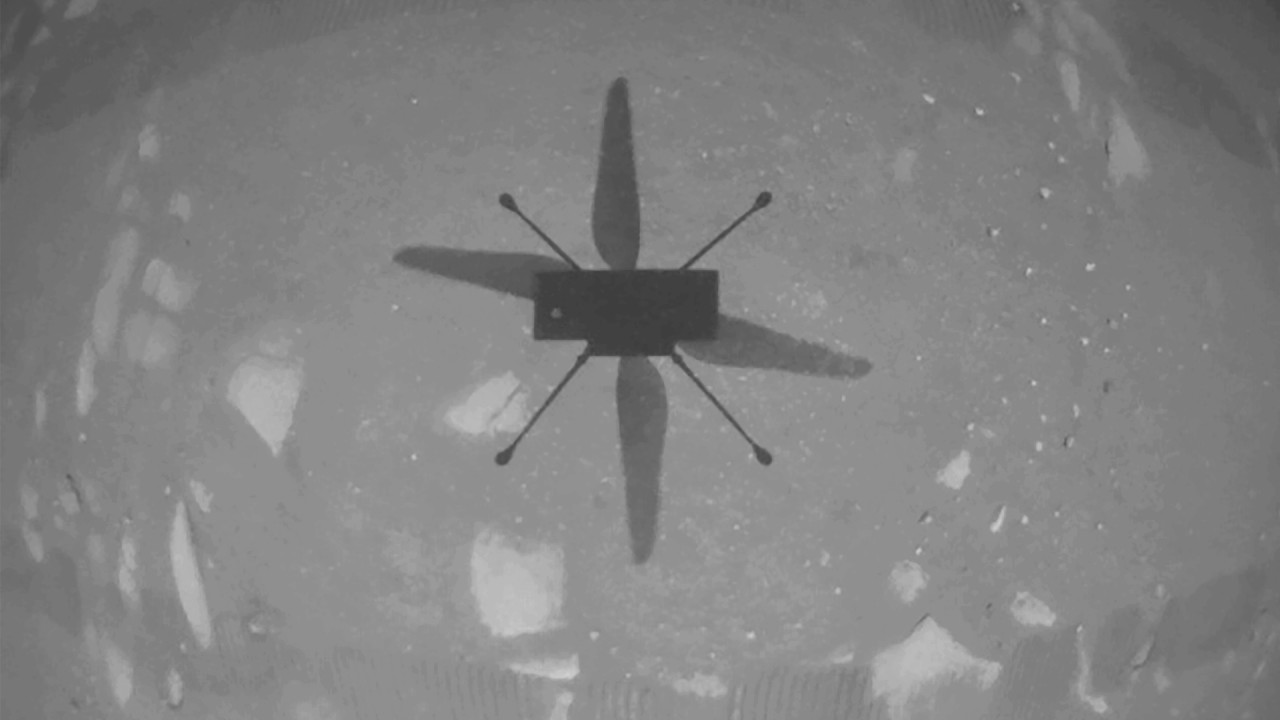
SpaceX sends crew to International Space Station, recycling rocket and spacecraft for first time
- It is the third time SpaceX has sent humans to the ISS as part of its multibillion-dollar contract with Nasa
- ‘I think we’re at the dawn of a new era of space exploration,” SpaceX founder Elon Musk said after the launch
The Crew-2 mission, which includes the first European, Thomas Pesquet of France, blasted off from pad 39A at the Kennedy Space Centre in Florida.
“We’re glad to be back in space,” said mission commander Shane Kimbrough of the United States.
The Crew Dragon capsule, named Endeavour, is now racing to catch up with the ISS.
Earlier, the team said their final goodbyes to their families before boarding three white Teslas for the launch pad, a new tradition established by SpaceX.
The cars’ licence plates read “recycle”, “reuse”, and “reduce”, in a nod to the fact that both the Falcon 9 booster and Endeavour were deployed on previous missions.
Flying on used vehicles is a key cost-saving goal of Nasa’s partnerships with private industry.
The day before, Pesquet tweeted a photo of the space quartet, which includes American Megan McArthur and Japan’s Akikho Hoshide, relaxing on the beach in Florida.
“Our friends on the @Space_Station are expecting us to show up and we don’t want to be late. They even installed my bedroom recently and literally made my bed. Such nice hosts!” he added.
The extra “bed” is necessary to accommodate an unusually large number of people aboard the ISS: 11 in total, as the Crew-2 team overlaps for a few days with Crew-1 astronauts, in addition to three Russian cosmonauts.
It is the third time SpaceX is sending humans to the ISS as part of its multibillion-dollar contract with Nasa under the Commercial Crew Programme.
SpaceX wins US$2.9 billion Nasa contract to take humans back to moon
The first mission launched last May, ending nine years of American reliance on Russian rockets for rides to the ISS following the end of the Space Shuttle programme.
“I think we’re at the dawn of a new era of space exploration,” said SpaceX founder Elon Musk, who made a surprise appearance at the post-launch press conference.

The launch was a major milestone for Europe, which named the mission “Alpha” after the star system Alpha Centauri.
“This is really the golden era for us in terms of exploitation of the International Space Station,” said Frank De Winne, head of ISS programmes for the European Space Agency (ESA).
Germany’s Matthias Maurer and Italy’s Samantha Cristoforetti are set to follow Pesquet on SpaceX missions, this fall and next spring respectively.
The next module of the ISS, built by Russia, should reach the station in July and will include a robotic arm built by ESA that Pesquet will help make operational, De Winne added.
ESA will also be a key partner to the United States in the Artemis programme to return to the moon, providing the power and propulsion component for the Orion spacecraft, and critical elements of a planned lunar orbital station called Gateway.
The Crew-2 team has around 100 experiments in the diary during their six-month mission. These include research into what are known as “tissue chips” – small models of human organs that are made up of different types of cells and used to study things like ageing in the immune system, kidney function and muscle loss.
In terms of the environment, by the time Crew-2 returns in fall, it will have taken 1.5 million images of Earth, documenting phenomena like artificial lighting at night, algal blooms, and the break-up of Antarctic ice shelves.
Another important element of the mission is upgrading the station’s solar power system by installing new compact panels that roll open like a huge yoga mat.
For now though, the three space agencies, as well as the astronauts’ colleagues and families, are basking in the glow of a safe and successful launch.
“It’s been a lot of excitement, lots of ups and downs for the past couple of weeks, and now it’s all done and it was beautiful,” Pesquet’s wife Anne Mottet said.
“So I’m feeling relieved, I’m feeling really happy,” she said, adding she had told Pesquet, “I’m going to be watching you”, when they said farewell.

.png?itok=arIb17P0)

